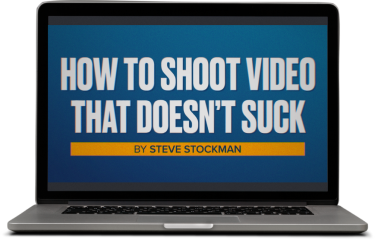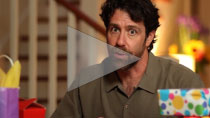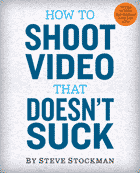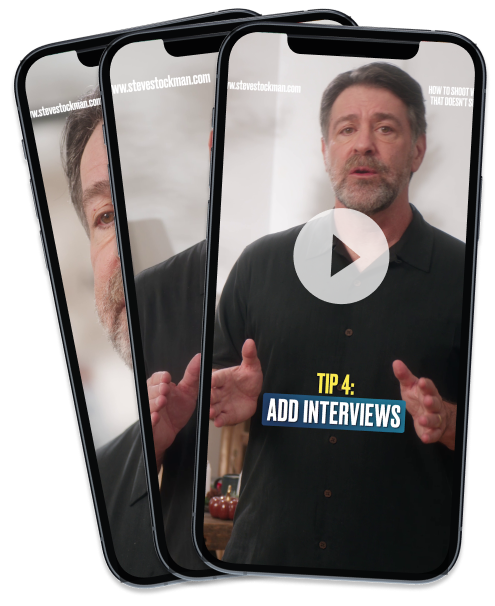I have a brain that likes things logical, nicely ordered and in line. You follow the rules, you get the result. I can’t get my head around the order of shots, stories and putting it all together.
Once a week we go to the grandparents house for dinner. We have a niece and nephew, 4 and 1 respectively, who come over as well. It is a good time had by all and I want to capture the moments as they learn and grow. I just can’t figure out what the story is. I get that I should take short shots of what’s happening but when you put them all together, will it make sense?
I’m pretty sure I am just overthinking it, and should maybe just try it.
–Bryan
Yes, you are and you should. But to help you, let me give you a feather to hold in your trunk– oops, I mean a rule you can follow to improve your videos.
Story is a magical organizing force that pulls your video together and makes it more watchable. And you don’t have to do any writing or heavy thinking in advance to make it work. Because magical. Here’s your rule: next dinner, pick the first idea that comes to you and focus on that.
What’s interesting about, say, your nephew? For example, suppose you notice that, being 1, he’s learning his first words. “Baby talks.” Noun/verb. Bang! First thing! That’s your story.
Now shoot short shots of baby playing with language. At some point, as people interact with baby, something interesting will happen. Suppose you see Grandpa showing him how to say “fork” and handing him a kids’ fork. Baby puts it in his ear. Grandpa repeats the word. Baby tries to say it, instead uttering a familiar Anglo-Saxon epithet. Everyone laughs. Baby repeats epithet over and over, then throws food on floor. Grandpa makes a bad “Meet the Forkers” joke. End of story.
The magical rule has given you an observational focus. Grandpa trying to teach baby to talk. By becoming intensely interested in shooting everything about it, you magically find a story. When this story is done (and it’s done when it feels done or starts to bore you) repeat the observation step and pick another story. Now shoot that one.
At the end of the dinner you will have a camera full of little stories. If you like to edit, cut the ones that don’t work so well. You can package the best ones into standalone bites for Instagram, depending on how hip an uncle you are. Or edit all of them into a video called (okay, this is not my most inventive title ever) “Dinner at the Grandparents’ House.” When you do, you will be surprised to find that these short and interesting stories fit together in some bigger and very watchable way.
To review the Rule* for Story as an Organizing Force:
- If you’re having trouble finding story, go with the first thing that you notice
- Become intensely interested in it and
- Shoot it until it feels over or you get bored
- Repeat
- Cut the bad stuff.
*Please don’t email about “rules” in video. Been there, done that. Remember this is just a feather for Bryan. For you, when it says “rule” please read “exercise.”
If you think the only thing that would make this blog better would be me reading it to you out loud, check out the audio version of How to Shoot Video that Doesn’t Suck.

Get a free preview of the new video course!
Sample two lessons from our new video course free right now. No signup or credit card required!










 Steve Stockman is a writer/ producer/ director in Los Angeles. How to Shoot Video That Doesn't Suck, available in 9 languages, is the best selling video how-to book in the world. You can find the updated edition from Workman Publishing wherever you get books, ebooks or audiobooks.
Steve Stockman is a writer/ producer/ director in Los Angeles. How to Shoot Video That Doesn't Suck, available in 9 languages, is the best selling video how-to book in the world. You can find the updated edition from Workman Publishing wherever you get books, ebooks or audiobooks. 

Hi, I have loved your book from when I read “it’s not about the camera” and wanted to read it through a second time when I got distracted by this blog. Thanks a lot for writing both!
I am trying to film my borzoi (that’s a very beautiful and very fast sighthound) and I am having the same problem I can see with the “baby talks” above: Thinks happen so fast, and often unforeseeable, that half the action is over by the time the shutter is pressed.
So far my solution has been to just leave the camera running and finding the best bits in editing (or kicking myself for not getting the shot) – but I am finding that rather tedious. Is there a better way?
Tough choice: Let the camera roll forever and sort through the tedium, or miss it all. Pros hire editors to review the tedium, and they become very adept at mining the gold. But for everyone else, I suggest thinking more about what you shoot, editing “in camera” and forgiving yourself for missing great moments. As you watch your dog through the viewfinder and practice shooting shorter shots in-camera, you’ll learn more about her behavior. And you’ll get better at anticipating (and not missing) so many cute shots. It may also help to remember that cute dogs yield a lifetime of cute shots, and it would take you another lifetime to watch them all.
Thank you for this and your How to Shoot Video that doesn’t Suck book!
I am struggling with story as it relates to plants-I want to make videos about landscape plants-how to and informative. The plant is the hero but struggling with verbs. Plants grow, bloom, die…get cut, etc but SLOWLY. I think the detail you suggested in this response will help me figure it out!